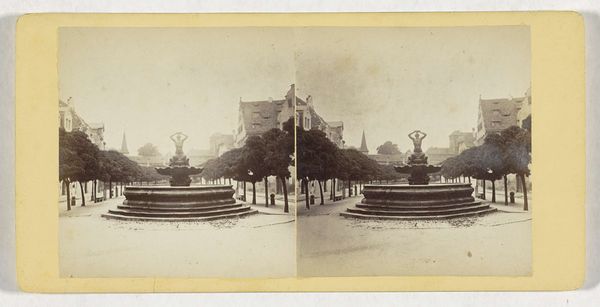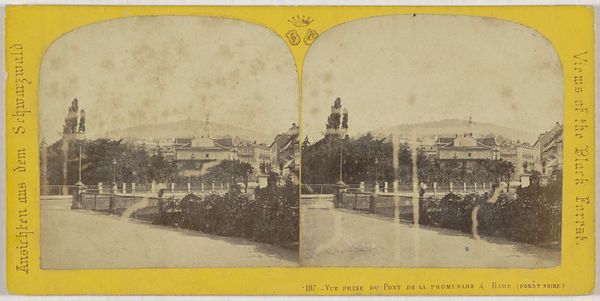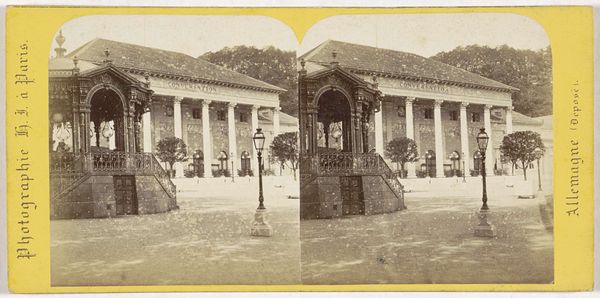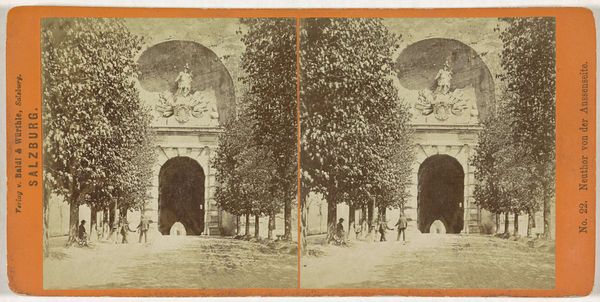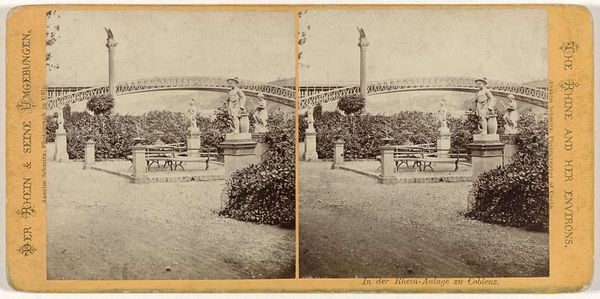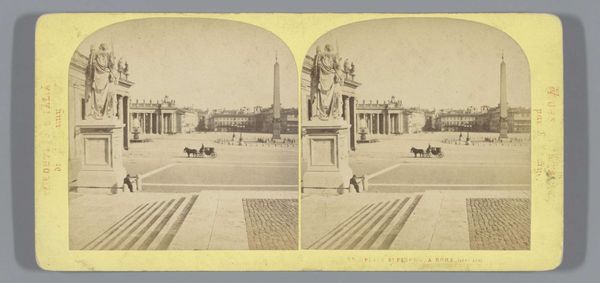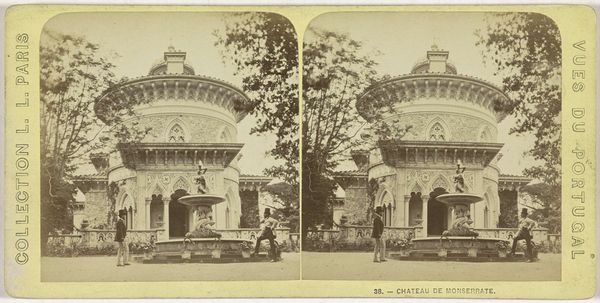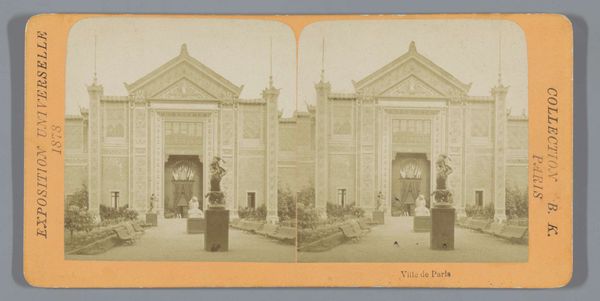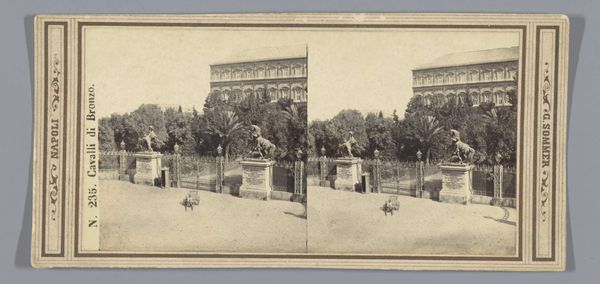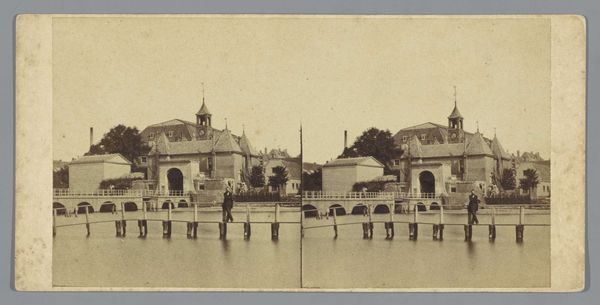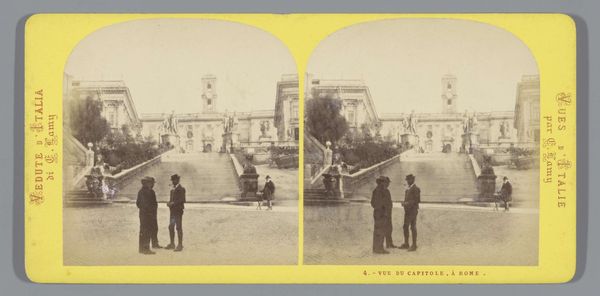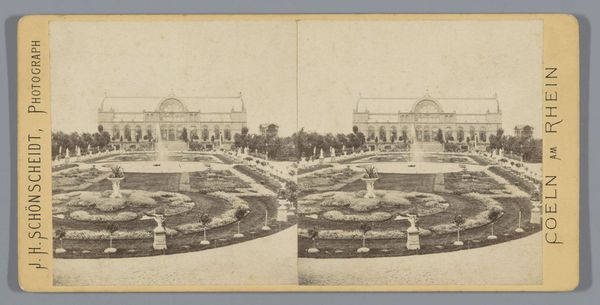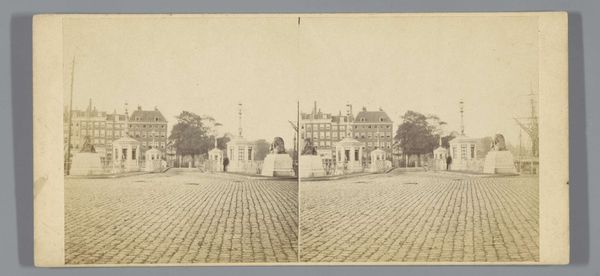
Dimensions: height 87 mm, width 178 mm
Copyright: Rijks Museum: Open Domain
Curator: Looking at this evocative photograph from between 1861 and 1878 by Ernest Eléonor Pierre Lamy, titled “View of the gardens of Palazzo Borromeo on Isola Bella,” what's your initial take? Editor: Immediately, I sense a grand theatre of sculpted stone and foliage. The repeating shapes of the terraces ascending create this powerful visual echo. Curator: Precisely. Isola Bella, a jewel in Lake Maggiore, became a stage for aristocratic display. The Borromeo family transformed this island into a Baroque masterpiece to showcase wealth and power. It also shows the important link between Romanticism and landscape. Editor: That’s visible in the symbolism—the architecture is obviously assertive, projecting power, but the natural elements, softened by the sepia tone of the photograph, evokes a sense of idyllic beauty. Do you notice the figures on the stairway seem diminished, almost engulfed by the immensity of the site? Curator: The Romantic sensibility saw nature as sublime, something powerful and often overwhelming, but it’s also a glimpse into 19th-century tourism, particularly for the elites of the day. It reveals the desire for connection, and in some cases dominion over such sites. The act of photographing itself becomes part of the colonial experience, marking the capturing of new landscapes. Editor: Interesting… So in viewing the image, tourists become another element. This connects with other themes—order and disorder and control. All represented with natural iconography. Curator: In that sense, photographs like these popularized notions of specific landscape settings, playing into broader cultural trends about place and identity. Photography became instrumental in framing perceptions of Italy, almost akin to a carefully staged drama, to use your analogy. Editor: Lamy created quite a narrative, intentionally or not. Looking closely, it’s really incredible how so many visual and emotional complexities can exist within what feels like such a serene vista. Curator: Absolutely, considering the layered meaning makes for quite an interesting look back.
Comments
No comments
Be the first to comment and join the conversation on the ultimate creative platform.
